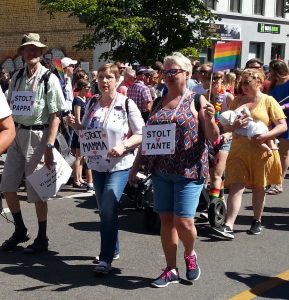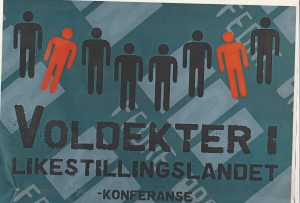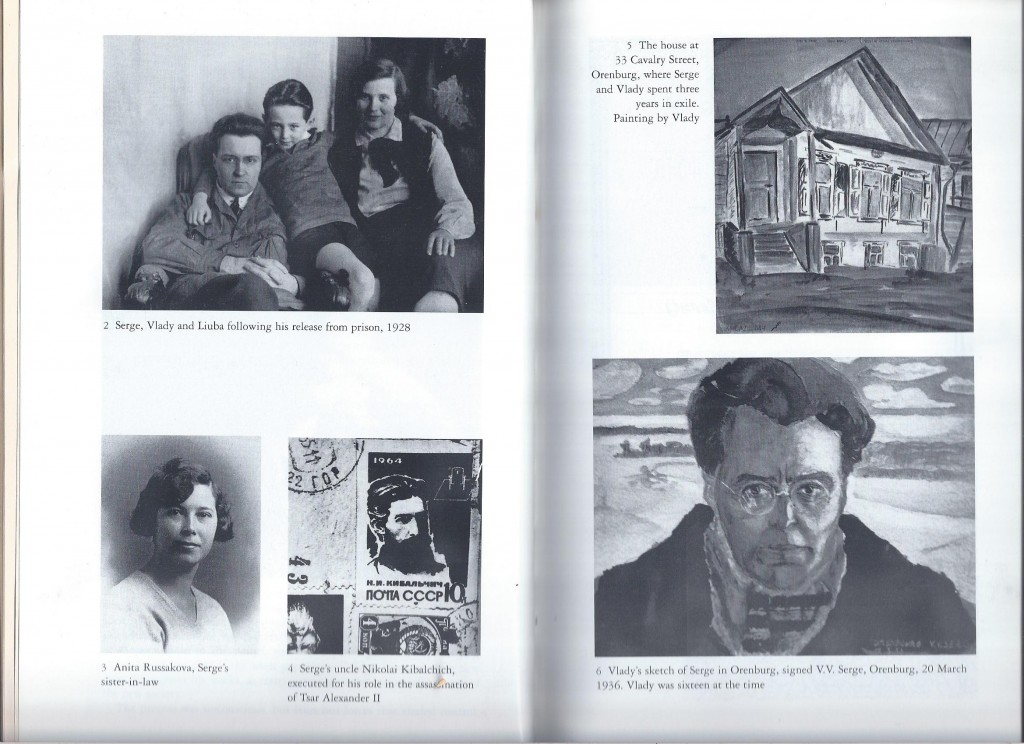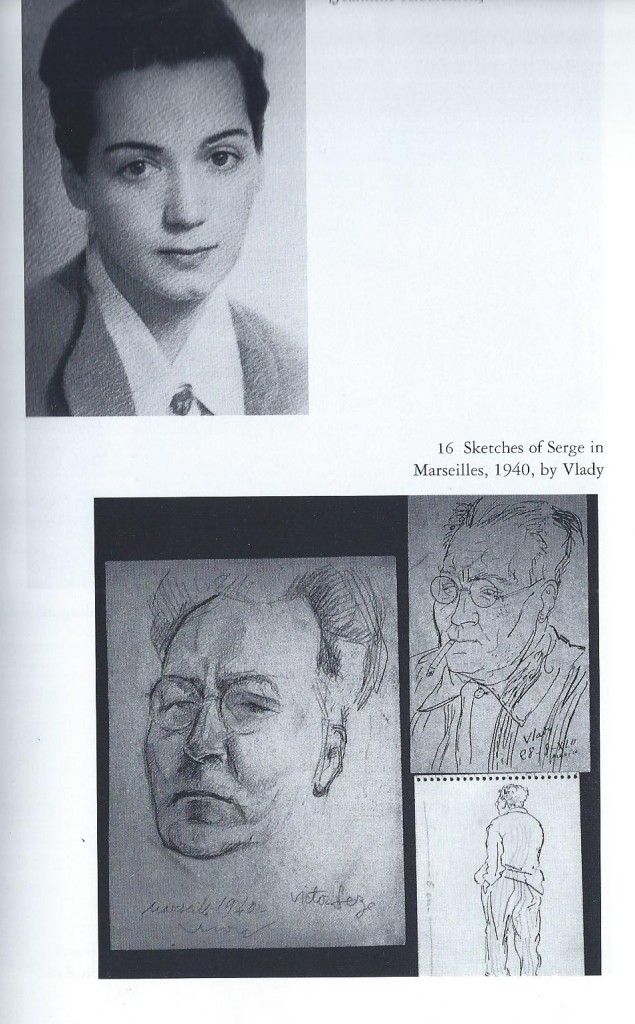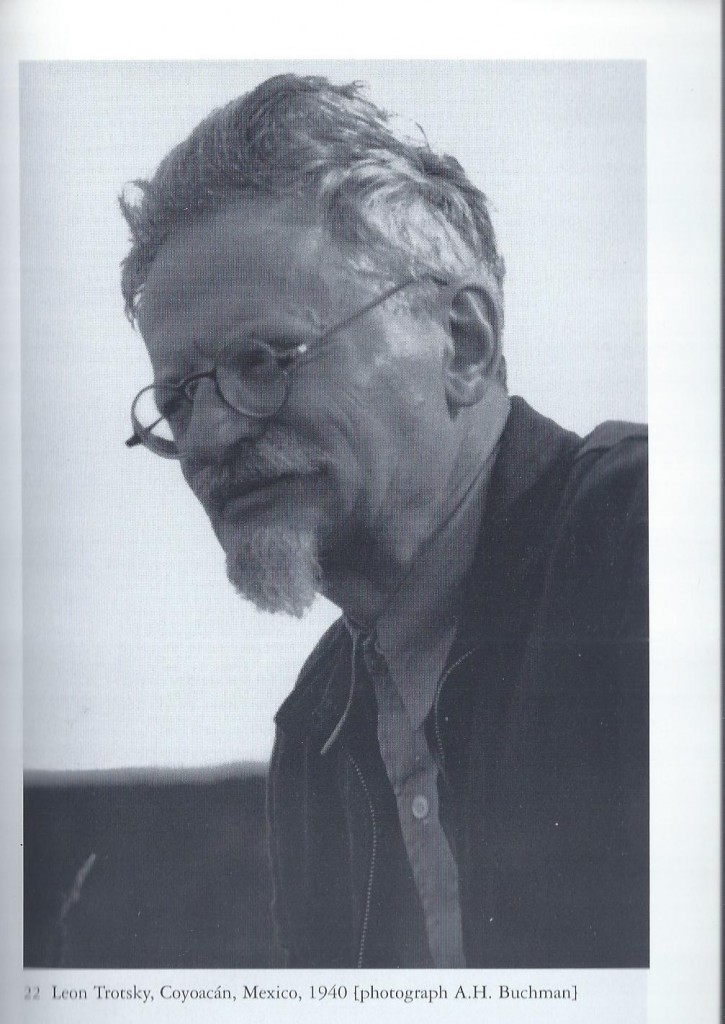
One of the reasons why the 1960s can be classified as “optimistic” was that they had a clear topic in mind – “consumer society”, and what to do about it. Change seemed possible. Later, the topic turned into “capitalism”. This short essay tells why this was not a good idea.
Consumer society – back to the 60s future?
I read science fiction novels from the 1960s since I love their optimistic vision off the future, before all the bleakness and depression set in. Like I love the best music from that period. I listen to music referencing and critically reflecting the optimistic period, later, like A perfect circle: Motive (LP cover extract above).
Back then, from 1964-65 onwards, western culture was influenced by what was known as the youth revolt, commonly displayed by long-haired boys that challenged conventional gender norms by “looking like girls”. The youth revolt evolving into the counter culture had one main target, or obstacle – not yet defined fully as “enemy” – namely, consumer society. Later, by 1969, due to the repression of the youth revolt, a new image became dominant – there was an enemy, and its name was capitalism. Or the establishment. At the time, this was seen as a more “advanced” and mature analysis of society – the flower children finally growing up.
Was it – really? It is consumer society, not capitalism as such, that has contributed most to the current climate crisis. Doing away with capitalism has not lead to better climate performance (sometimes, the opposite, e g in the Soviet Union). The same production-consumption oriented economy has ruled society, regardless of political color and formal positions of power-holders. The “vague” and “fuzzy” consumer society analysis actually has grown less old, than the supposedly improved capitalism versions.
Back in the 1960s, as a young reader, I absorbed Aldous Huxley’s Brave new world, where citizens are indoctrinated into consuming, as well as novels by Philip K Dick and others detailing the problems of consumer society. Here is one of several 60ies novels where the traditional male role in consumer society was challenged:
Today, I think consumer society oriented analysis has stood the test of time better than most capitalism analyses. Although they may be combined, and consumer society analysis is somewhat blind unless it also has a map of core capital formations and political and economic processes. Its main point, to me, is that it includes all and any in the diagnoses. It does not creep down to the level of “us” versus “them”. Like working class and capitalists. Or one ethnic group against other groups.
Consumer society analysis basically says, this is complex, we are all into it, one or the other, in different roles and positions. Research may find “classes” of consumer pushers, dealers, strong and less strong consumer adherence / addiction, and so on, but this is clearly a varied landscape, not like a class division. And what is more, it is clearly related or broadly relational, meaning that the choices of one individual are clearly influenced by those of others. It is partly collective and partly individual behavior. It is partly economic but cultural, social and psychological (etc) also – clearly interdisciplinary.
Consumer society theory, appearing from the 1950s onwards, was tuned to the economic, social and cultural contribution of the individual, including the possibility of change on that level – not just the positioning between classes within the consumption cycle. Later research on life forms, work and family, and similar topics confirmed the perspective. Briefly put, consumer society is not just an ordering of society, but also of ways of life. The role of the male breadwinner has been one primary social “driver” behind the system, although women contribute too.
Marx, already, recognized that capitalism affects this syndrome at various levels – in more or less “civil” forms – where “relative” surplus value, developing from more “absolute” value forms, could emerge. Relative surplus value production became tuned to the superior position of the male breadwinner – even though it was actually women (and children), not men, who were the main workers in the early capitalist industry that Marx witnessed. Capitalism “absorbed” and “redirected” earlier societal gender arrangements, and added discrimination forms on its own. Women were the first main workers in the early industrial revolution, later replaced by men. When the “Russian proletariat” stood up in favour of the Russian revolution, e g in Petersburg, a majority of factory workers were still women – not men. It was only gradually that “industry” became a male bastion, and”consumption” a female affair, in the development of consumer society – with the US as leading force in the 20th century.

Some pictures revisited
Øystein 14.12.20
I was born in 1952. I remember my early school years as bad. I was mobbed, due to living in a non-traditional family. In the 1950s, having a career mother was enough to qualify for deviance from the norm, and parental divorce did not make it better. Later, I paid back, with a vengeance, not just through my writings, but also in my visual art.
An early influence in my development of drawing and painting, was our teacher Eva Grande, at the primary school (Ullevål skole), who patiently took us along the route to beautiful hand writing, as well as stopping any perceived tendency towards mobbing (she saw just some of it, but that was not her fault).
Learning from her, I started to “beautify” the letters she wrote on the blackboard. I made other sketches as well, which got into a habit, in the more boring lessons of other teachers. Later, I used this technique on other shapes as well, not just letters. Like this outline somewhat resembling a shrimp.
My drawings and paintings were always on a “hobby” level, I never tried to become professional, or make it my living, which was probably wise, given my limited talent.
Hitting back at the mobbers – symbolically – could include pictures like this one, called “Angry man”:
I remember, at school, making these kinds of portraits, a teacher asking “Is this me?”. “No”, I said. I never thought of anyone in particular. I tried to grasp the tendency.
I also tried to picture the conflict itself, e g through a broken heart. Like a space explorer with a strange helmet.

Author at the Margareta Church ruins, in the Maridalen valley north of Oslo, early March 2020
Blog post written March 16, updated March 22 and April 6, 2020
“There is no such thing as society” – ? The social profile of Covid19
A virus does not have any idea of social class, status, and other forms of ranking or hierarchy in human society. It just looks for bodies where it can survive and multiply.
The virus spreads to “somebody”, not just “anybody”, in our society. It doesn’t affect all groups in the population equally.
It spreads through people who create society through their practical lives.
The neoliberal idea that “there is no such thing as society” (Margareth Thatcher), that we are only individuals, is not very convincing in these times of trouble.
Epidemics have a social class profile, and this is an important perspective to keep in mind, as argued by Svenn-Erik Mamelund at Oslo Met, and other researchers. Mamelund warns that the effects of the pandemic will be worse, in lower income groups https://www.klassekampen.no/article/20200316/ARTICLE/200319974
The total cost of epidemics is usually higher among poor people and regions. This is why, as the WHO warns us, we need to worry about Africa and the poor world, in the current situation, not just the spread of the virus in Europe and the US. Poor countries will be even worse hit, and this will hit back on us, unless we can break the cycle.
The new corona virus is socially blind, it just jumps to the nearest somebody. Workers in high-contact jobs are more prone to get it, and people with more social contact. The transmission as well as the resulting Covid-19 disease has a social profile, with the death rate much higher among some population groups than others.
Although the patterns of disease transmission and development are partly cloudy, two facts emerge beyond doubt. 1) the disease selects by age, older people are more likely to get heavier symptoms and are more likely to die from the resulting worsening of the disease. 2) underlying health problems like heart problems and diabetes are also clear negative factors increasing the chance of dying from Covid-19.
Men go first
It is also clear that the death rate from the disease is higher among men than women. Yet the reasons for this are still in the dark. They are not well clarified.
It seems that, once again, “gender” is a topic that stands at the end of the queue, regarding research, even though, empirically, it is central.
I have looked for research on men’s larger death rate from Covid19 since late February. It is only in the last weeks that the issue has shown up more frequently, mainly in the media, citing recent and still rather fragmented research.
The numbers are only partly clear. I have not seen exact international statistics, regarding the gap between women and men’s chance of dying from the disease. My overall impression is that men stand a one and a half chance, to a double chance, of dying from the disease, compared to women. According to the Chinese evidence (based on the first 55 000 deaths), the chance of an infected man dying from the disease was 168 percent the chance of a woman dying from it (crude fatality rate). A more recent study (72 ooo deaths) shows a very similar pattern, 165 percent chance.
Why?
The first reports, from China, on the larger death rate among men, were tentatively explained by the much higher proportion of smokers among men compared to women in the country. Now, reports from Italy indicate that men are even more prone to die from the disease compared to women, than in China. The “extra male burden” of the new disease is maybe even larger in Italy than in China. Yet in Italy, smoking is more gender-balanced than in China. From age 60 upwards – the main part of the new disease death cases – the proportions of women smoking is circa 80 percent the proportions of men. The gender gap in smoking seems too small to explain the large fatality difference. See https://www.statista.com/statistics/501615/italy-smokers-by-age-and-gender/
I wrote about this in the original version of this post some weeks ago. Now (April 6) I see the same point picked up elsewhere also, e g in this informative text: https://www.wired.co.uk/article/coronavirus-death-men-women
There is recently more interest in gender issues, and I notice a move away from purely “external” explanations, like smoking, towards more integrated approaches. Even if damaged lungs doesn’t help, its not enough to explain the gender difference. The same goes for other biological or other disease factors. They are important, but they don’t explain all. Quoting from the above paper:
“Ultimately, biology, lifestyle and behaviour are all likely to play a role in the spread and impact of Covid-19. But it will only be possible to understand the exact differences between men and women once more countries produce and make available sex-disaggregated statistics on infection and mortality.”
Possibly, fatal cardiovascular disease, more common among men than women, is a more important factor behind the different fatality rates, than smoking. Studies point to a higher fatality among men at this point, maybe twice as high as women, and cardiovascular disease is the number one factor increasing the complications of the new disease, ahead of diabetes, and others, according to Chinese studies. However, this is probably also only part of the picture. The fatality from cardiovascular disease becomes more gender-balanced, among older people.
There are other medical or biological explanatory factors too, including better immune systems among women, and maybe hormone and chromosome differences, but the picture is still far from clear (as far as I can see).
Patterns of behaviour – our old friend “society” – most probably plays a large role.
Men and health
According to men and masculinities research, men are in situations that may work against good health, and often adapt to patterns of action and practice that increase the health problems. Men’s health behaviour is more often in the high risk zone, than women’s behaviour.
A dramatic example of this rule comes from studies of suicide. These show an almost universal global pattern – men suicide more often than women. Recent studies have also mapped suicide attempts, not just suicides. Here, the situation is the opposite. Women, not men, are most prone to attempt suicide. These studies show that when people consider suicide, men tend to do it, while women more often stay on the brink, they may attempt it, but they don’t go through with it.
Similar patterns can be found in other health-related behaviors. Compared to women, men typically take less (and later) contact with the health system, and are less open about problems. Even in gender-equal Norway, if a couple has a problem, it is typically the wife contacting the family councelling or therapist, dragging the husband along.
Greater fatality among men compared to women in different age groups and for different diseases and causes has been reported e g by the UK researcher Alan White (https://alan-keith-white.blogspot.com/2019/07/mens-health-and-womens-health-emerging.html).
These are relevant factors, even if they may not play the main role for the Covid19 deaths today. The health and social evidence are important parts of the whole. Another important data source on men and health is the International Men and Gender Equality Study (IMAGES, cf. https://promundoglobal.org/programs/international-men-and-gender-equality-survey-images/
It should be noted, that the idea of a “zero sum game” in terms of gender and health is rejected by most health researcher, even if it lives on in the media. Women’s health does not improve by men dying before them (or vice versa). Instead, women’s and men’s health problems should be seen in connection, and reduced in terms of better health behaviours from both (all) genders. Yet the idea stays on, in today’s media and debate.
According to the evidence regarding gender conceptions and bias, “fundamentalist” gender ideas may become stronger, in times of crisis or perceived danger. Crises may create “social panic”, a pattern mapped by researchers already in the 1960s. With more anxiety, studies show, there will be more of a backwards leaning on what is “safe”. Strict conservative gender rules are often considered “safe”. The evidence at this point is not conclusive (there may be gender innovative responses also), but it is clear that gender conservative fallback is a recurrent trend.
Generals planning for the last war?
Imagine what would happen, if women’s death rate from the new disease was almost the double of men’s. Would there have been an outcry? I think so. In gender-equal countries like Norway, at least.
I find it strange, based on the death rate evidence, that “male” is not included, and still not much highlighted and discussed, among the new disease risk factors.
Why not?
Is it mainly due to gender conservativism and a kind of automatic thinking? Men are more prone to die, this is part of the male role, with the man as protector and provider? We are “at war” with the virus, we are told. And men / soldiers are of course the ones most likely to pay their lives. So, the empirical red light warning, the much higher death rate among men, has mainly passed under the conceptual radar.
Class experts tell us that Covid19 will hit poor people worst. Gender experts tell us that women will be worse hit. This has been very visible in Norway, and internationally, as the media debate has taken up research issues, with more peope concerned about the “how” and “why” of the disease.
I think these experts, opinion leaders, or “generals”, are mostly quite correct, regarding strategy, or overall impact. Yet generals need to know about tactics too. Tactics is not about what happens some years ahead. It is about what happens today and tomorrow. The current empirical picture of transmission, hospital treatment and death from Covid19.
We need to untangle the overall long term effects of the disease, from the actual happenings here and now. Especially, we need to distinguish between the transmission group and the serious impact group (those who get seriously ill, and may die).
For a dramatic example, compare the Black Death. This also probably first started among poor people – we don’t know. It spread through tradesmen to Europe. A typical first stage is transmission through people with money and contacts.
This is now replicated in the European evidence including Norway. Here, ski tourists from Italy and Austria brought home the virus. Likewise, with the so-called Spanish Flu after World War 1, the origin seems to have been in the US, spreading to Europe and the rest of the world mainly through the military. Poor people, and women, usually get the largest total costs from epidemics, but the transmission, especially in the early stage, is another story.
Top down transmission
Instead of the poorest and the lower classes, we obviously have a situation with a “top down” type of distribution of the virus, e g in Norway.
It started with people with money and contacts, mainly. And the fatality rate seems to be quite high, in these groups also. The lack of attention to the top down spread is evident in Europe and elsewhere with leaders in isolation, or infected.
Crying wolf regarding the working class, or women, is important in an overall perspective, but may be misleading, here and now. To understand and reduce pathways of infection and death from the disease we need to look at the upper/middle class, people in occupations with much contact – and men.
There are two different main groups involved, in reducing the total damage to society – the transmitters, and the seriously affected. Their social profiles started quite similar, but are now more diverse, as the disease spreads downwards in terms of social class, gender and ethnicity.
This is now quite clearly confirmed by local evidence from Oslo, capital of Norway. At first, the transmission was largest in the most affluent parts of the city. Recent evidence shows a shift towards the less affluent parts. Maybe, in some weeks time, these areas will be on the top of the list of infections per capita. The transmission will still be somewhat top-down, probably, but less so, than in the first phase.
This prediction fits the international Covid19 statistics (see e g Worldometers). Here, the numbers still read like a “rich world” club of transmission and deaths, with the rich world country deaths outnumbering the poor countries, and with the “epicentre” moving, with US rising fast, and Europe slowing down, while poorer countries – so far – have far lower rates.
This will most probably change, according to top down transmission class and gender analysis and historical epidemic evidence. We shall see. What is clear, here and now, is that top down transmition is shifting into wider transmition, going further out and downwards in terms of social status (class, gender, and others).
It seems that some of the bias and outmoded thinking in the first stage of the disease – where the gender death rate imbalance was almost totally overlooked (in February, early March, in my evidence), and the top down transmission evidence was mainly ignored (again, in my impression) – was due to the way expert researchers have conceptualized their work. They are into “gender”, for example, but in a quite restricted way, where gender mainly means “women”. Where men are assumed to be of less interest, and/or less gender-equal.
This gender-means-women bias is quite typical, in my experience, in international organizations, for example. Likewise, in terms of class, there is a common response, class means the lower class. Is this approach wrong? On the whole, no. But like I said, it is not the full picture. Tactics differs from strategy. Tactics involves the empirical material, here and now. At that point, experts have been slow to respond, in my view.
Since women generally live longer than men, and age is the number one factor increasing Covid19 fatality, we might have expected more women than men dying from it. Yet this is not the case. This underlines the need to investigate gender differences further.
Summing up
Clearly, better knowledge of the “hidden” gender dimension is needed. Researchers and experts need to cooperate, to create the best possible socio-medical-biological mapping of how Covid19 spreads, how it develops into serious illness, and takes lives – and how it can be reduced.
It is now clear that this will be a long-term pandemic. Gender is one of the central variables regarding the death rate from Covid19, and the reasons for this, still mostly unknown, are important for research and prevention.
The social part of the mapping of Covid19 should include social class, gender, ethnicity and other factors. This is vital and urgently needed. Gender may be a key factor, to reduce the disease and the social and economic cost of the pandemic.
Today (April 4), in Norway, there is really no telling how many have been infected by the virus. This is because testing equipment has become scarce and testing is not at all on the level of the WHO recommendation (“test, test, test”). So, experts and health workers are trying to trace transmission paths through a very limited number of test numbers. This is clearly far from optimal.
But at this stage, a social probability map – and guidelines – who, to test – is very important. Where to look, to find the transmitters. Social science cannot predict this exactly, of course, but it can help out, making it more likely that the tests that are actually done, find their target – the transmitters.
Author following Covid19 news on a mobile phone, April 6 (reading some good news, maybe light in the tunnel, now.)

En internasjonal undersøkelse (IPSOS) tyder på at kjønnslikestilling er det minst kjente området blant 16 omåder i forhold til FNs bærekraftsmål, selv om det er presentert ganske høyt på listen, som mål nr 5.
“A new Ipsos survey finds that at a global level, three out of four adults (74%) have at least some awareness of the United Nations’ Sustainable Development Goals (SDGs). These goals, laid out by world leaders in 2015, were 17 benchmarks set in order to end poverty, fight inequality, and stop climate change around the world. This survey asked more than 19,000 adults from 28 countries about their awareness and opinions of 16 of the 17 SDGs”
«Ingen sult» var det mest kjente av FNs bærekraftsmål, 85 prosent, fulgt av «rent vann», 84 prosent, og «ren energi» med 83 prosent. Etter en rekke med nokså håndfaste mål der raten for kjenskap varierer fra 85 til 79 prosent, kom de to sosiale målene om redusert sosial ulikhet, som en egen pulje lenger bak. Dvs «redusert ulikhet» 76 prosent, og «kjønnslikestilling» 74 prosent.
Cf
https://www.ipsos.com/en/awareness-united-nations-sustainable-development-goals-highest-emerging-countries
https://www.weforum.org/press/2019/09/global-survey-shows-74-are-aware-of-the-sustainable-development-goals

Photos by Øystein Gullvåg Holter
Young girls in the parade
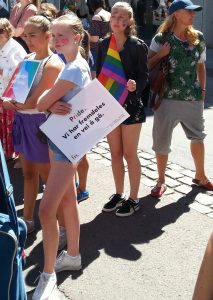
The placard reads “Pride. We still have a way to go”. Men were involved too, but more reluctant, like this picture suggests.
Displayed in many ways
Her placard reads: “Old gays love best”
There were expectant groups of bystanders along the way of the Pride parade, like here
And here
New meetings happened along the way
Seniors participated also
Sisters on the move (“Proud sister”)

The “Men against rape” initiative
In 2006-7, there were many rape cases in Oslo. Some media called it a ‘rape wave’. I wanted to do something about this. I initiated a network and campaign, “Men against rape”. Many men signed our declaration. We got support from the Reform resource center and the Gender Equality Ombudsman.
The picture is a poster from one of our arrangements, in 2009.
The text says: “Rape in the gender-equal country – conference”.
The conference was held at Litteraturhuset, in Oslo. We also had stands and distributed leaflets in Oslo.
The campaign was clearly directed towards men. We addressed men as “fathers, brothers, partners and friends”.
We held several seminars and made interventions in our local contexts. The campaign also got media attention, e g
http://www.dagbladet.no/magasinet/2008/03/07/529076.html
http://www.dagsavisen.no/innenriks/lanserer-menn-mot-voldtekt-1.855437

“Why can’t we play today
Why can’t we stay that way “
Richard Wright, Remember a day, on Pink Floyd album A saucerful of secrets, 1968

Jeg fikk Mannsprisen 2013 på et arrangement på Litteraturhuset i Oslo 25.11.13 arrangert av Mannsforum. Jeg er bare delvis enig i Mannsforums synspunkter, men begrunnelsen for prisen var bra – det var en takk til meg som kjønns- og likestillingsforsker. Derfor sa jeg ja.

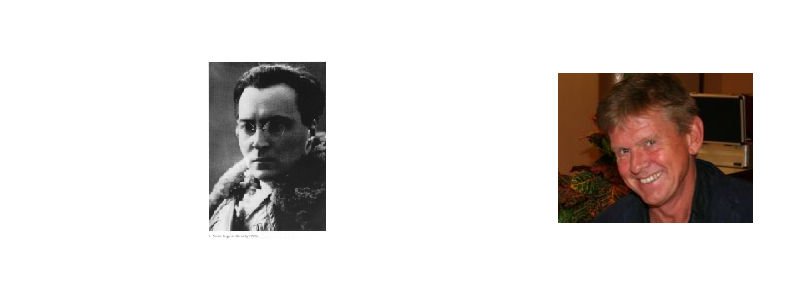 Stalin’s killings created the first holocaust, destroying a whole generation of revolutionaries, the bloodiest counter-revolution so far in history.
Stalin’s killings created the first holocaust, destroying a whole generation of revolutionaries, the bloodiest counter-revolution so far in history.
Victor Serge (summary), in Susan Weissman: The Course is Set on Hope,Verso, London, 2001.
Victor Serge (1890-1947) was a democratically oriented French-Russian left-wing intellectual, who was persecuted first in France, and later in the Soviet Union. He criticised power misuses by the Bolsheviks and joined the left opposition trying to stop Stalin from taking over, serving several prison sentences and barely escaping from the Soviet Union.
Serge wrote about Stalin’s repression:
“The average man, who cannot conceive that lying on this scale is possible, is taken unawares (..) Outrageous language intimidates him and goes some way to excuse his deception: reeling under the shock [of the Moscow trials] he is tempted to tell himself that there must, after all, be some justification of a higher order passing his own understanding. (..) In any case, it was not a matter of persuasion: it was, fundamentally, a matter of murder. One of the intentions behind the campaign of drivel initiated in the Moscow Trials was to make any discussion between official and oppositional communists impossible. Totalitarianism has no more dangerous enemy than the spirit of criticism, which it bends every effort to exterminate.” (Quoted by Weissman, p. 209).
Weissman’s book is very highly recommended.
As regards “lying on this scale” it is useful to consult Nazi propaganda minister Goebbels, who had the same conviction that if your lie is great enough, you will succeed.
Weissman’s book includes photos and affectionate drawings by Victor Serge’s son, Vlady. A few are reproduced here, in the interest of further research.
Below, at left, Victor is pictured with his family, and at right, painted by his son, in exile, in the early 1930s, He does not look famished or depressed. This may have been made when the democratic alternatives still seemed to have a chance in the new Soviet Union.
However the Serge family were shocked by the news of increasing persecution. Here is Vlady’s impression of Stalin’s killings:
This is an utterly amazing and horrendous portrait, made by a young artist. Later research has shown that Vlady Serge’s “premonitions” were true. Millions of people lost their lives in Stalin’s death camps.
In the photos below, shown in Weissman’s book, the young artist is shown at top; next are his sketches of Victor having escaped Soviet persecution:
Vlady pictures his father troubled, and somewhat impatient, bottom right, hand in pocket. This is much like Victor emerges, in the photo below, in France. The men are perhaps discussing potentials for anti-nazi resistance. They seem to be filled with action, quite optimistic. Despite much persecution, Victor Serge did not hang his head.
As the Stalinist repercussion hardened, all opponents were lumped into one case – enemies of the Soviet Union. Leon Trotsky, below, in a sense “profited” on this treatment, becoming “enemy number one”. Here is a picture of Trotsky, close to Serge’s visit.
This position of Trotsky and Trotskyism as the number one alternate to Stalinism was effectuated not least by Stalin himself – after one of his many hit-man gangs managed to kill the arch-enemy in August 1940.
Serge was symphathetic to many points made by Trotsky but he was not a Troskyite, as Weissman’s book documents. Serge did not live to write down a history or greater theory of what happened. Yet his independent viewpoints are very valuable and important.
See further
Holter, Ø. G. 2004e: “A theory of gendericide”, In Jones, Adam, ed.: Gendercide and genocide. Vanderbilt University Press, Norman
Holter, Ø. G 1984d: ”Sosialismens herredømme: kvinner og menn i Sovjetøkonomien” (Socialist Patriarchy: Women and Men in the Soviet Economy”), Materialisten 4, 1984, 41-62. See text.















